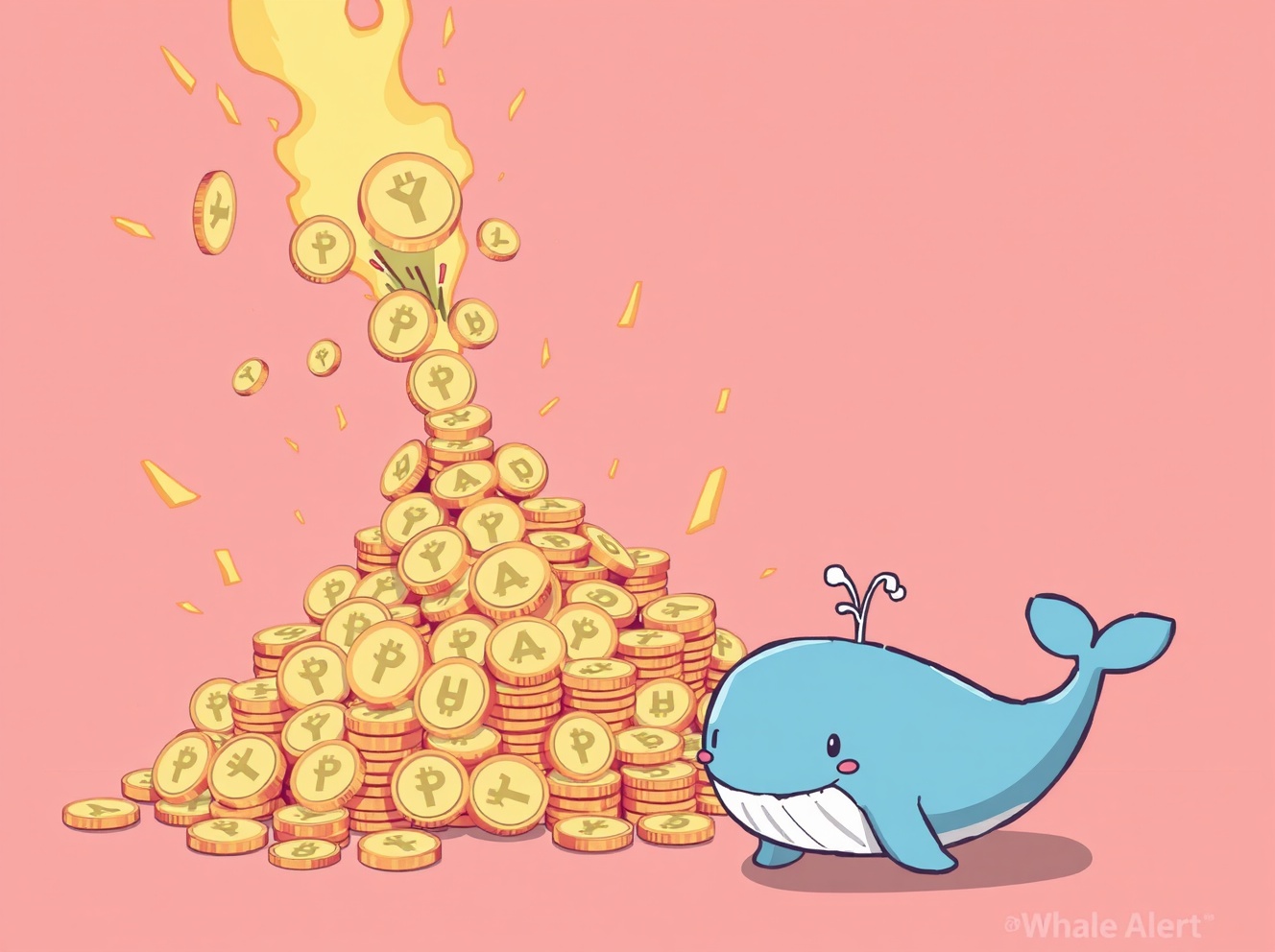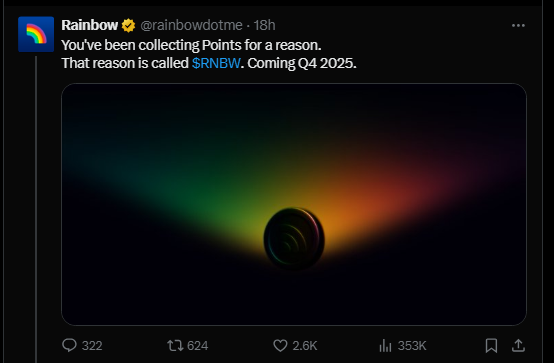PYUSD Token Burn: Unpacking the Astonishing 600 Million Vanish
BitcoinWorld
PYUSD Token Burn: Unpacking the Astonishing 600 Million Vanish
The cryptocurrency world is abuzz with a significant event: a massive PYUSD token burn involving 600 million units of the stablecoin. This astonishing development, first reported by Whale Alert, saw a substantial portion of PYUSD removed from circulation from an unknown wallet. Such an event naturally sparks curiosity and raises questions about its implications for the stablecoin’s stability and future trajectory. What does it mean when such a large sum simply vanishes?
What Exactly is a PYUSD Token Burn?
Before diving into the specifics of this event, it is crucial to understand what a token burn entails. In simple terms, a token burn is the permanent removal of cryptocurrency tokens from circulation. This is achieved by sending tokens to an unspendable wallet address, often referred to as a “burner” address, where they can never be retrieved or used again. This process effectively reduces the total supply of the cryptocurrency.
- Why Burn Tokens? Token burns are often executed for several reasons:
- To reduce supply and potentially increase scarcity, which could lead to an increase in value if demand remains constant.
- To stabilize a cryptocurrency’s price, particularly for stablecoins.
- As part of a deflationary mechanism or to implement specific tokenomics strategies.
- To signal commitment to the project’s long-term health and value.
The 600 Million PYUSD Token Burn: What Happened?
Whale Alert, a well-known blockchain tracker, recently flagged a colossal transaction: 600 million PYUSD being transferred to an unknown wallet, which was subsequently identified as a burn address. The details surrounding the origin and specific intent behind this particular burn remain somewhat mysterious. However, the outcome is clear: these 600 million PYUSD tokens are now permanently out of circulation.
This scale of a PYUSD token burn is not an everyday occurrence. It represents a substantial reduction in the overall supply of the stablecoin. While the exact reasoning from the entity initiating the burn is not public, such large-scale actions are typically strategic, aimed at influencing market dynamics or fulfilling predefined tokenomic policies.
Why Does This PYUSD Token Burn Matter for the Stablecoin?
A burn of this magnitude carries significant weight, especially for a stablecoin like PYUSD. Stablecoins are designed to maintain a stable value, often pegged to a fiat currency like the US dollar. Reducing the supply can have several implications:
- Scarcity and Value: By decreasing the total available supply, the burn could theoretically enhance the scarcity of PYUSD. For a stablecoin, this often means reinforcing its peg rather than driving up its price above the peg.
- Peg Stability: A controlled burn can be a mechanism to help maintain the stablecoin’s peg to its underlying asset. If the stablecoin’s market price deviates below its peg, reducing supply can help bring it back into line.
- Market Confidence: Large, well-communicated burns can sometimes boost investor confidence, signaling that the issuers are actively managing the token’s supply to ensure its stability and health. However, an ‘unknown wallet’ aspect adds a layer of intrigue.
What Are the Potential Impacts of Such a Large PYUSD Token Burn?
The immediate impact of the 600 million PYUSD token burn is a reduction in the total circulating supply. This action, while seemingly straightforward, can ripple through the broader cryptocurrency ecosystem. For PYUSD holders and potential investors, understanding these potential impacts is key.
One primary effect is on the supply-demand equilibrium. With fewer tokens available, if demand for PYUSD remains consistent or grows, the stablecoin’s peg could be strengthened. Moreover, such a substantial burn might also be part of a larger strategy to comply with regulatory requirements or to adjust the stablecoin’s backing reserves.
It is important to consider the transparency surrounding such events. While the act of burning is verifiable on the blockchain, the ‘unknown wallet’ aspect of this particular burn leaves room for speculation about its origins and ultimate goals. Transparency in such large-scale operations often builds greater trust within the community.
In conclusion, the recent 600 million PYUSD token burn is a remarkable event that underscores the dynamic nature of the stablecoin market. While the exact motivations behind this specific burn from an unknown wallet remain to be fully clarified, its immediate effect is a significant reduction in PYUSD’s circulating supply. This move has the potential to influence the stablecoin’s scarcity, strengthen its peg, and shape market perceptions, ultimately contributing to the ongoing evolution of the digital asset landscape.
Frequently Asked Questions About the PYUSD Token Burn
Here are some common questions regarding token burns and the recent PYUSD event:
- Q1: What is a cryptocurrency token burn?
A1: A token burn is the process of permanently removing cryptocurrency tokens from circulation by sending them to an unspendable wallet address. This reduces the total supply of the token. - Q2: Why do projects conduct token burns?
A2: Projects burn tokens for various reasons, including reducing supply to potentially increase scarcity, maintaining a stable price (especially for stablecoins), implementing deflationary tokenomics, or signaling commitment to the project’s long-term health. - Q3: How does a PYUSD token burn affect its value?
A3: For a stablecoin like PYUSD, a token burn is typically used to help maintain its peg to the US dollar by adjusting supply. While it reduces scarcity, its primary goal is usually to reinforce stability rather than to increase its price above the peg. - Q4: Is the 600 million PYUSD burn a positive or negative event?
A4: Generally, a controlled token burn is considered a positive mechanism for managing supply and potentially strengthening a stablecoin’s peg. The specific details, like the ‘unknown wallet’ in this case, might raise questions about transparency, but the act of burning itself is a common strategy. - Q5: How can I verify a token burn?
A5: Token burns are recorded on the blockchain. You can typically verify a burn by looking up the transaction on a blockchain explorer, where you will see tokens sent to a known burn address (an address with no private key, making the funds irretrievable).
The world of stablecoins is constantly evolving, and events like this PYUSD token burn are crucial to understanding its dynamics. If you found this article insightful, please consider sharing it with your network on social media. Your shares help us bring important crypto news and analysis to a wider audience!
To learn more about the latest crypto market trends, explore our article on key developments shaping stablecoin market stability.
This post PYUSD Token Burn: Unpacking the Astonishing 600 Million Vanish first appeared on BitcoinWorld.
Vous aimerez peut-être aussi

SUI Holds $3.67 While Digitap Emerges As Best Crypto To Buy Now For Real-World Spending

$RNBW Token by Rainbow Is Set to Revamp the Crypto Wallets Throughout This Quarter
